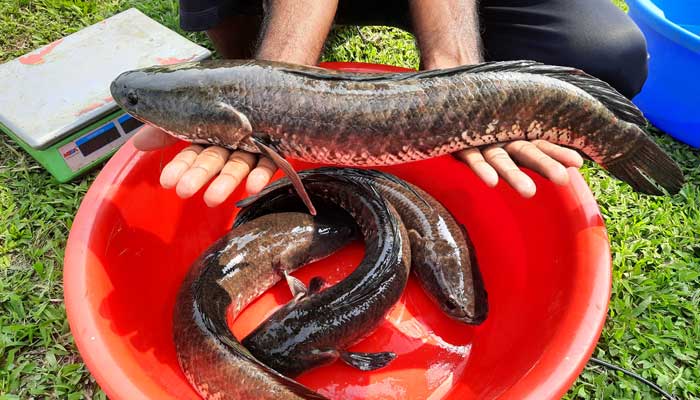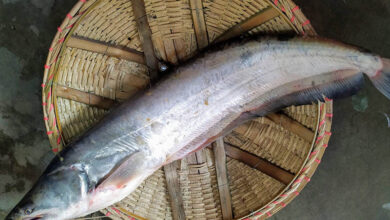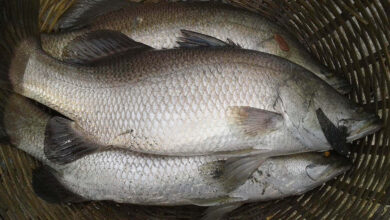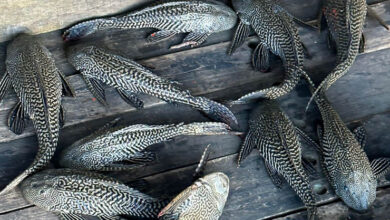
The striped snakehead, or murrel, Channa striatus, is a carnivorous air breather that is highly valued in the market because of its high nutritional and medicinal values, delectable food, and ability to be sold alive. The fish is regarded as one of the species that is vital for commerce in Bangladesh, Vietnam, Cambodia, Malaysia, Thailand, and the Philippines. Because of increased human activity, altered habitat, and unrestricted hunting, this highly valued fish is currently regarded as a vulnerable species in Bangladesh.
It is now crucial to safeguard this threatened species in a way that is both worthwhile and sustainable. However, due to the lack of high-quality seeds and the challenge of inducing breeding in this fish species, neither commercialization nor conservation of the species could be accomplished. There should be clear guidelines for snakehead culture’s practices.
Site selection
Snakehead culture is best suited for locations near canals or rivers that have enough high-quality water flowing through them either tidally or by pumping.
Pond preparation
The stocking pond is 30 decimal meters in size and 0.5 to 0.8 meters deep. Ponds should be fully dried, tilled, and have excess aquatic plants and shrubs removed to create embankments. One kilogram of lime per decimal place should be added to the pond to increase productivity and the pH of the water. To raise the density of plankton in pond waters, inorganic fertilizers such as 300 g/decimal urea and 700 g/decimal triple super phosphate (TSP) should be added after 5 days of water intake. Applying 5 kg/decimal of cow manure after 5 days of fertilization is recommended. Then, 2 kg of mustered oil cake per decimal should be administered after 2 days. Horra (Metal chain) should be pulled daily over the following seven days to avoid fertilizers settling and perhaps causing methane to build up in the bottom of the pond. Once there is an abundance of phytoplankton and zooplankton, the pond water turns green, making it suitable for the stocking of desirable fish fingerlings.
Seed or brood collection
In order to produce high-quality seed, farmers can purchase Shol brood or fingerlings from breeders or from the natural water bodies of haor, baor, or beel and place them in ponds for natural breeding. Snakehead breed during pre-monsoon and monsoon season. The stocking period of fry is from June to November and brood in pre monsoon season. These fry are added to the nursing pond at a rate of 345–874 fry/m2, or 0.15–0.38 kg/m2.
Feed management
The C. striatus fish typically feed at night. Till harvesting, shol fish should be fed live feed or trash fish with an additional diet of rice bran, fish meal, and mustard oilcake at a rate determined by their anticipated body weight. For the first week of their culture, fingerlings should be fed at a rate of 20% of their body weight; after that, the rate should be gradually reduced. Typically, extra, or uneaten food is discovered to float for three to four hours, allowing the feeding schedule to be adjusted appropriately.
Water quality & disease management
Since natural selection occurs in the wild, where the seed stock originates, snakeheads have a high level of resistance to disease and parasites. Abnormalities brought on by environmental stress, parasite attacks, and poor water quality resulted in significant losses in fish productivity. In order to stop these losses, effective monitoring is required.
Harvest & Marketing
Snakeheads are cultured for seven to eleven months. Once the fish reach a marketable size, they are harvested when the price on the market is favorable. Using a portable water pump to decrease the water level in the raising pond and then seining are involved in harvesting. Following the process of sieving, the entire crop is harvested, and the pond is emptied.
Farhana Islam
Agriculturist, Researcher
Fisheries Resource Management, CVASU




